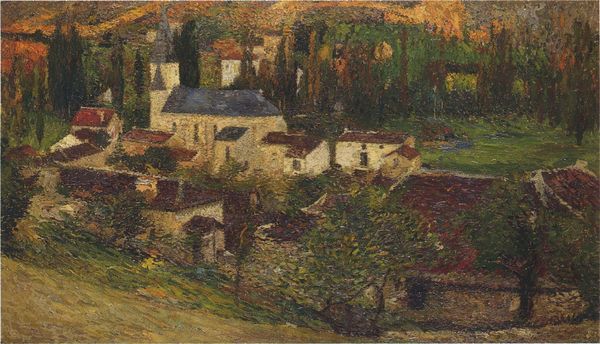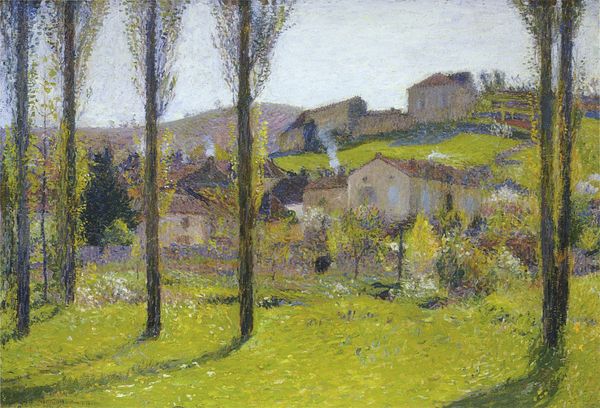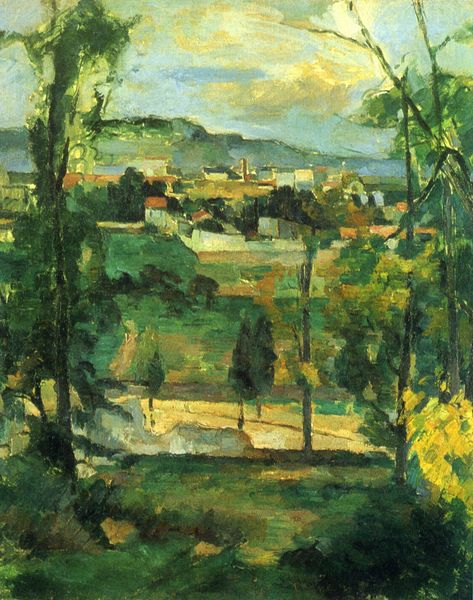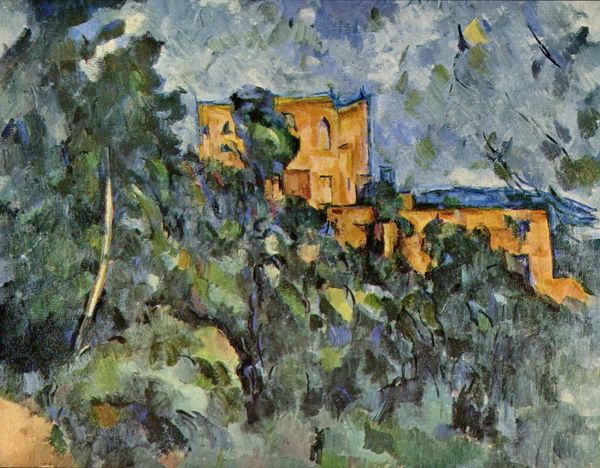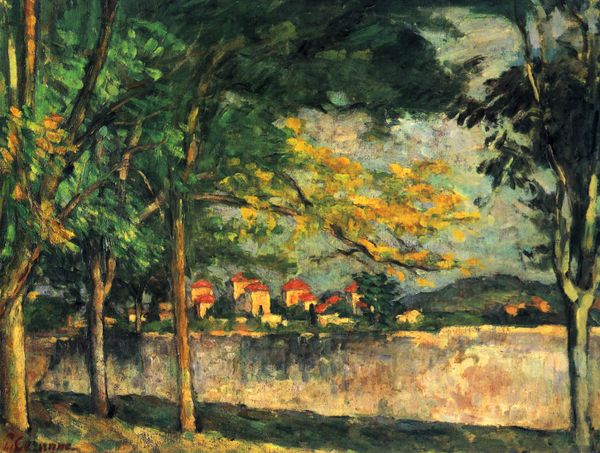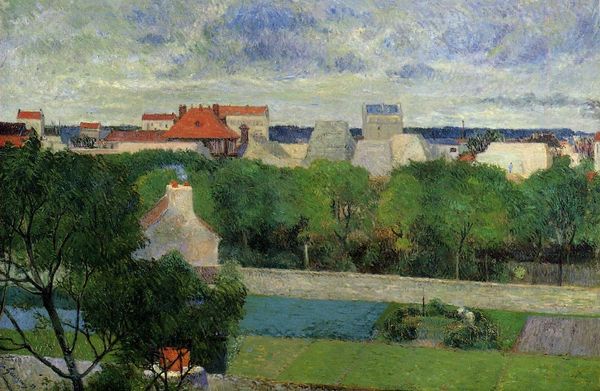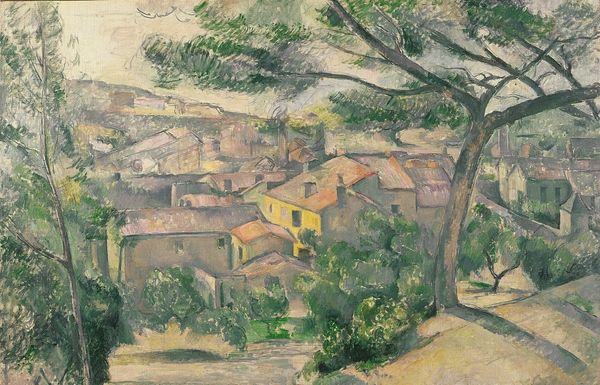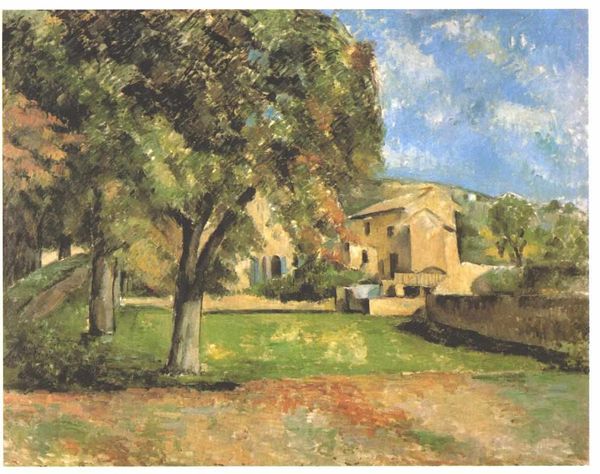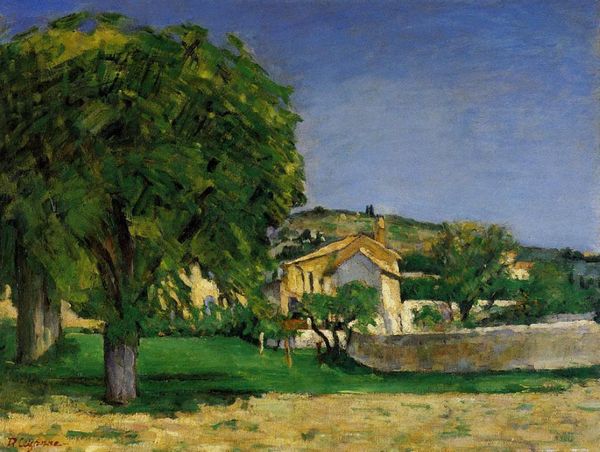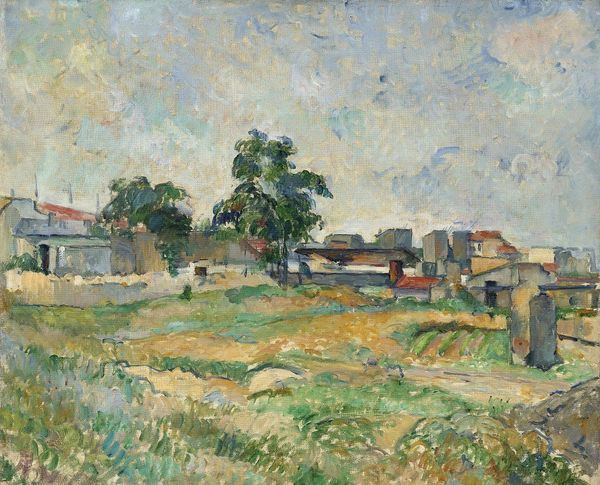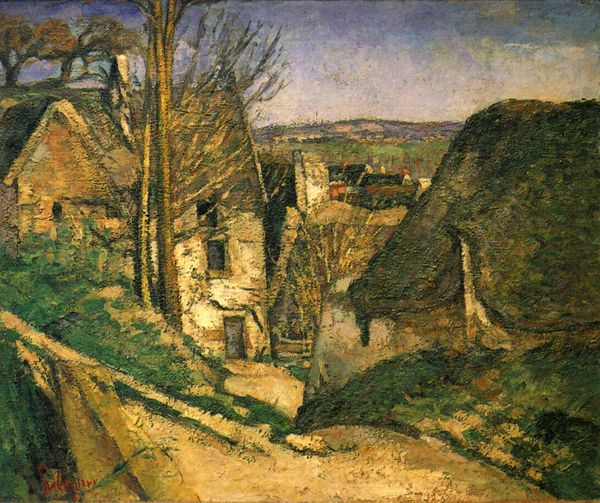
painting, plein-air, oil-paint
#
tree
#
rural-area
#
painting
#
impressionism
#
plein-air
#
oil-paint
#
landscape
#
house
#
impressionist landscape
#
figuration
#
form
#
oil painting
#
plant
#
cityscape
Dimensions: 50 x 58 cm
Copyright: Public domain
Curator: Look at this verdant scene—Cézanne’s "Orchard in Pontoise" from 1877. What is your first impression? Editor: I'm immediately drawn to the density of it all. So much green, but not just one green—layer upon layer of brushstrokes that build depth, like peering through foliage. Curator: Absolutely. It's a testament to Cézanne's method of building form with color, applying paint in small, deliberate touches. You see the materiality, the layering of oil on canvas. Consider how revolutionary it was at the time to portray a landscape not as a seamless illusion, but as a constructed object, defined by the artist's process and the very substance of paint itself. Editor: What strikes me too are the houses barely peeking through the trees; almost swallowed. Nature dominates, which suggests a certain worldview, perhaps? Are we meant to see the encroachment of nature on civilization, or perhaps the insignificance of human constructions? The green might also signify abundance, or growth - even potential rebirth after an autumn, for example? Curator: Fascinating. The houses as vulnerable within nature resonates with Cézanne's overall project. He sought to reveal the underlying structures, not just of landscapes, but of seeing itself. Look closely, notice how those houses in the distance are constructed of those same planar brushstrokes, that lack of vanishing point flattens the composition in service to form. This focus removes narrative, drawing our eye instead toward the painting’s physical creation, his mark, his making. Editor: Indeed. By using these shapes repeatedly across nature and houses he flattens both. There's the relationship of the houses to the orchard, and the interplay between cultivation and untamed growth. Perhaps it's not about civilization versus nature, but their inherent relationship as symbols on one flat visual plane. Curator: And his practice echoes this relationship. Moving his easel outdoors to be amongst the scene. Editor: His choice to be outside among nature, combined with your observation on painting making choices and how it’s made - both make the whole painting, somehow. Well, it’s something to consider for next time! Curator: Agreed! It's the act of painting itself as much as the scene it depicts.
Comments
No comments
Be the first to comment and join the conversation on the ultimate creative platform.

